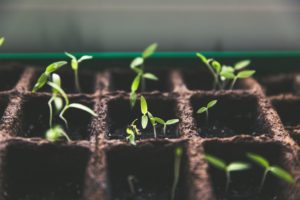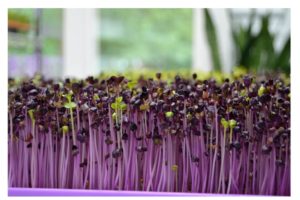Various perennial and annual plants are usually propagated from seeds. Even though growing plants from seeds is a lot easier than other methods of increasing plant population, some challenges go along with it because of germination preparations for certain kinds of seeds. This is to avoid certain inhibitions during the germination process and be able to see healthy growing plants. These propagation requirements are listed below:
Selection of Seed
To start with your seedling propagation, you need to know about the seeds that you will work on. Propagation usually is very common to grains, flowers, vegetables, and perennials that are easy to grow. In buying seeds, it is best to get those that are fresh, but the seeds from the previous year can also be used since they, still can germinate as long as they were stored properly, following the correct moisture content, temperature, and relative humidity. The seeds that you collect from your existing garden may also be used except for seeds taken from hybrid plants, it is suggested that new seeds should for used for these types of plants.
Where to Plant
Any type of seed would require proper containers and media for its growth until they reach the sowing stage. During the germination stage, it is important that you also provide sufficient water and optimum temperature. Here are some suggested containers for the germination process:
- Recycled containers are a good alternative for pots, especially during germination. You may recycle plastic storage containers, milk cartons, aluminum pie pans, or used paper coffee cups. Clean them thoroughly before using making sure that there are no residues or traces of the old contents of the container. Make small holes, about 6-8 holes at the bottom for drainage provision.
- Clay or plastic plant pots are also available. You may get them from garden stores, hardware or variety trading shops. You may also use recycled plastic pots.
- Pots from organic materials or peat are also good, for starting seeds, you can use one and three-fourth inch square pot. After putting in a growth medium, you can start with one plant per pot. This type of pot eliminates transplanting the plant before outdoor planting because once the plant’s roots grow through the sides of the pot, you can just place the pot outdoors.
Germination Mix
Prepared mixtures for germination can be bought from garden shops. These mixtures can be composed of peat, vermiculite plus and plant nutrients in small amounts. If you wish to prepare your own germination mix, make sure that your media is sanitized to kill organisms that can cause disease in your plants.
Temperature
As a general rule, flower and vegetable seeds germinate at seventy-five to eighty degrees Fahrenheit. When the temperature falls to sixty degrees Fahrenheit, germination slows down and can result in a fungal disease in the plant. However, some plants can germinate better at fifty to sixty-five degrees Fahrenheit. Be sure to check the germination temperature of the seeds that you plan to work on. If you are located in a place with good temperature, take advantage of the variations in your place, if not, you can place thermostatically controlled heating mats below your germinating medium.
Light
Some seeds need light for germination, while for some, the light holds back germination. For vegetable seeds, these are not affected by light significantly. After germinating from seeds, this is the time when plants need adequate lighting for healthy growth. If a germination location with good lighting is not available you can provide artificial light. Even though you have natural light, you can still opt to place artificial light as a supplement to extend day length and improve plant growth. There are different types of artificial light that you can use, and t5 grow lights are one of these artificial lights use for germinating seeds and growing plants. You can put some timing devices to automatically turn on and off these lights. Make sure to locate the lights at about 10-12 inches above the plants for a fluorescent fixture and at 18 inches above if you are using incandescent light, as you would not want to stress the environment with heat dissipated by the light.
Fertilizer
You just need to prepare this and use the fertilizer once your plant starts to grow and you see that it has pale green leaves or stem or it may seem like it has some discoloration. Your seedling may just need fertilizer once or twice before they are taken outdoors or replanted outdoors.
Like a child who wants to start schooling, you would want the place and things he needs to be prepared first. It is building a good foundation for his growth. So thus seedling propagation, you need to carefully choose the seeds you want to propagate, get facts about its requirements to be able to germinate, and make sure to provide these requirements and make a good growth of the plant.




